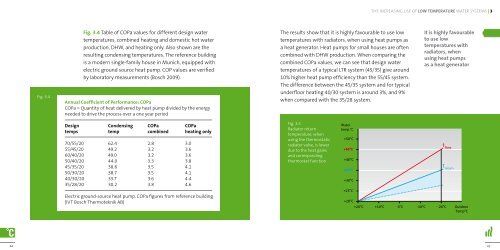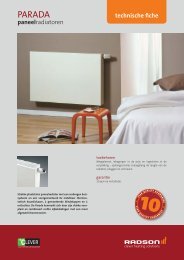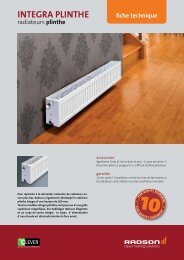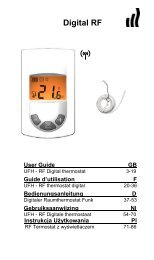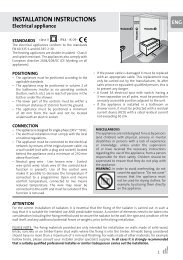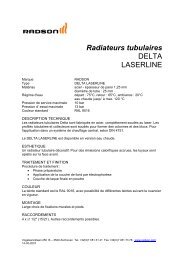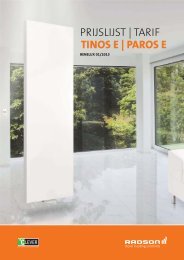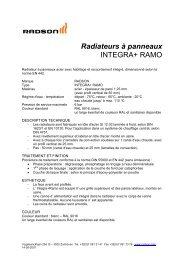Download - Purmo Radson
Download - Purmo Radson
Download - Purmo Radson
You also want an ePaper? Increase the reach of your titles
YUMPU automatically turns print PDFs into web optimized ePapers that Google loves.
THE INCREASING USE OF LOW TEMPERATURE WATER SYSTEMS | 3<br />
Fig. 3.4<br />
Fig. 3.4 Table of COPa values for different design water<br />
temperatures, combined heating and domestic hot water<br />
production, DHW, and heating only. Also shown are the<br />
resulting condensing temperatures. The reference building<br />
is a modern single-family house in Munich, equipped with<br />
electric ground source heat pump. COP values are verified<br />
by laboratory measurements (Bosch 2009).<br />
Annual Coefficient of Performance: COPa<br />
COPa = Quantity of heat delivered by heat pump divided by the energy<br />
needed to drive the process over a one year period<br />
The results show that it is highly favourable to use low<br />
temperatures with radiators, when using heat pumps as<br />
a heat generator. Heat pumps for small houses are often<br />
combined with DHW production. When comparing the<br />
combined COPa values, we can see that design water<br />
temperatures of a typical LTR system (45/35) give around<br />
10% higher heat pump efficiency than the 55/45 system.<br />
The difference between the 45/35 system and for typical<br />
underfloor heating 40/30 system is around 3%, and 9%<br />
when compared with the 35/28 system.<br />
It is highly favourable<br />
to use low<br />
temperatures with<br />
radiators, when<br />
using heat pumps<br />
as a heat generator<br />
Design Condensing COPa COPa<br />
temps temp combined heating only<br />
70/55/20 62.4 2.8 3.0<br />
55/45/20 49.2 3.2 3.6<br />
60/40/20 49.0 3.2 3.6<br />
50/40/20 44.0 3.3 3.8<br />
45/35/20 38.8 3.5 4.1<br />
50/30/20 38.7 3.5 4.1<br />
40/30/20 33.7 3.6 4.4<br />
35/28/20 30.2 3.8 4.6<br />
Electric ground-source heat pump. COPa figures from reference building<br />
(IVT Bosch Thermoteknik AB)<br />
Fig. 3.5<br />
Radiator return<br />
temperature, when<br />
using the thermostatic<br />
radiator valve, is lower<br />
due to the heat gains<br />
and corresponding<br />
thermostat function<br />
Water<br />
temp.°C<br />
+50°C<br />
+45°C<br />
+40°C<br />
+35°C<br />
+30°C<br />
+25°C<br />
+20°C<br />
+20°C +10°C 0°C -10°C -20°C Outdoor<br />
Temp°C<br />
t<br />
t return<br />
45<br />
44


